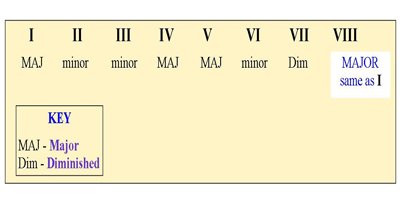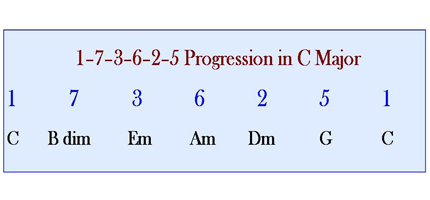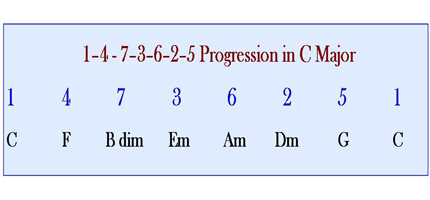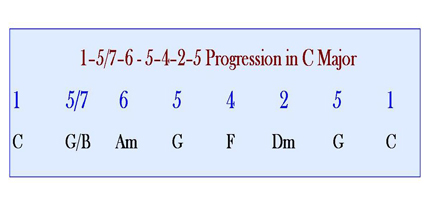More on Piano Chord Progressions
On the main piano chord progressions page, I have outlined how progressions work and introduce some popular chord progressions that are used in music.
On this page, you will be introduced to more advanced chord progressions that you can play on your piano and be provided with some illustrations that will help you understand the concepts taught.
However, it is very important that you keep in mind the meaning of the term “progression” as the lesson progresses.
As discussed in the introductory lesson, a chord progression can be described as a series of chord changes that are played throughout a piece of music.
Click here to visit the introductory lesson on piano chord progressions.
There are three chord progressions that we will be exploring in this lesson.
They are;
1 7 3 6 2 5 progression (I - VII - III - VI - II - V)
1 4 7 3 6 2 5 progression (I - IV - VII - III - VI - II - V)
1 5/7 6 5 4 2 5 progression (I - V/VII - VI - V - IV - II - V)
These progressions include more chord than the other basic types of progressions and they sounds great when they are placed at the correct bars or melodic phrases of the music. However, these three chord progressions are dominant in gospel and jazz music.
Now let us specifically investigate each chord progression. But before we do so, it is very important that you keep in mind the structure of the major scale.

Almost all chord progressions in music are developed based on the structure of the major scale.
The 1 – 7 – 3 – 6 – 2 – 5 Progression
This progression has four major movement points 1 6 2 5. However, two secondary chord changes are added (7th, 3rd). In other words it is the 1 6 2 5 1 progression with the 7th and 3rd added to it. The 3rd in this case is a minor chord and the 7th is a diminished chord.
Here is an illustration in the key of C major.

The 1 – 4 – 7 – 3 – 6 – 2 – 5 Progression
This progression works the same way as the previous progression – (1- 7- 3- 6 - 2 - 5) however, a 4(IV) chord (subdominant) is added to it. In some cases, a particular composition is arranged so that the 1-4-7-3-6-2-5 progression can be played.
Here is an illustration in the key of C major.

The 1 - 5/7 - 6 - 5 - 4 - 2 - 5 Progression
This type of progression sounds very interesting when it is played and includes the slash chord (5/7) which gives the sound of a 5th chord played in the 1st inversion. This chord progression creates descending scale movement when it is being played.
Here is an illustration in the key of C major.

Click here to visit the piano chord chart for chord illustrations!
Click here to leave the piano chord progressions page and return to home page!
Subscribe to receive free piano lessons
E-zines and other updates!









